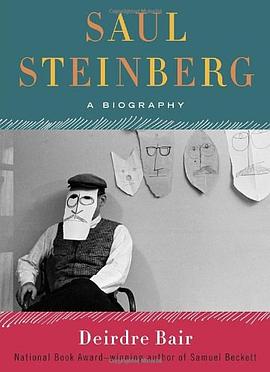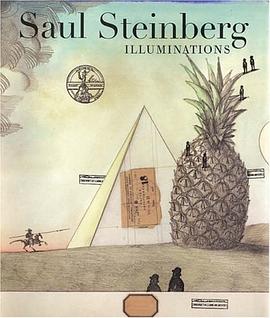Saul Steinberg 豆瓣
作者:
Deirdre Bair
Nan A. Talese
2012
- 11
From National Book Award winner Deirdre Bair, the definitive biography of Saul Steinberg, one of The New Yorker 's most iconic artists.
The issue date was March 29, 1976. The New Yorker cost 75 cents. And on the cover unfolded Saul Steinberg's vision of the world: New York City, the Hudson River, and then...well, it's really just a bunch of stuff you needn't concern yourself with. Steinberg's brilliant depiction of the world according to self-satisfied New Yorkers placed him squarely in the pantheon of the magazine's—and the era's—most celebrated artists.
But if you look beyond the searing wit and stunning artistry, you'll find one of the most fascinating lives of the twentieth century. Born in Romania, Steinberg was educated in Milan andwas already famous for his satirical drawings when World War II forced him to immigrate to the United States. On a single day, Steinberg became a US citizen, a commissioned officer in the US Navy, and a member of the OSS, assigned to spy in China, North Africa, and Italy. After the war ended, he returned to America and to his art. He quickly gained entree into influential circles that included Saul Bellow, Vladimir Nabokov, Willem de Kooning, and Le Corbusier. His wife was the artist Hedda Sterne, from whom heseparated in 1960 but never divorced and with whom he remained in daily contact for the rest ofhis life. This conveniently freed him up to amass a coterie of young mistresses and lovers. But his truly great love was the United States, wherehe traveled extensively by bus, train, and car, drawing, observing, and writing.
His body of work is staggering and influential in ways we may not yet even be able to fully grasp, quite possibly because there has not been a full-scale biography of him until now.Deirdre Bair had access to 177 boxes of documents and more than 400 drawings. In addition, she conducted several hundred personal interviews. Steinberg's curious talent for creating myths about himself did not make her joban easy one, but the result is a stunning achievementto admire and enjoy.
The issue date was March 29, 1976. The New Yorker cost 75 cents. And on the cover unfolded Saul Steinberg's vision of the world: New York City, the Hudson River, and then...well, it's really just a bunch of stuff you needn't concern yourself with. Steinberg's brilliant depiction of the world according to self-satisfied New Yorkers placed him squarely in the pantheon of the magazine's—and the era's—most celebrated artists.
But if you look beyond the searing wit and stunning artistry, you'll find one of the most fascinating lives of the twentieth century. Born in Romania, Steinberg was educated in Milan andwas already famous for his satirical drawings when World War II forced him to immigrate to the United States. On a single day, Steinberg became a US citizen, a commissioned officer in the US Navy, and a member of the OSS, assigned to spy in China, North Africa, and Italy. After the war ended, he returned to America and to his art. He quickly gained entree into influential circles that included Saul Bellow, Vladimir Nabokov, Willem de Kooning, and Le Corbusier. His wife was the artist Hedda Sterne, from whom heseparated in 1960 but never divorced and with whom he remained in daily contact for the rest ofhis life. This conveniently freed him up to amass a coterie of young mistresses and lovers. But his truly great love was the United States, wherehe traveled extensively by bus, train, and car, drawing, observing, and writing.
His body of work is staggering and influential in ways we may not yet even be able to fully grasp, quite possibly because there has not been a full-scale biography of him until now.Deirdre Bair had access to 177 boxes of documents and more than 400 drawings. In addition, she conducted several hundred personal interviews. Steinberg's curious talent for creating myths about himself did not make her joban easy one, but the result is a stunning achievementto admire and enjoy.

